This article was co-authored by Vote.org and by wikiHow staff writer, Eric McClure. Vote.org is a 501(c)(3) nonprofit that uses technology to simplify political engagement, increase voter turnout, and strengthen American democracy. In particular, it aims to reach underserved voters, and has established itself as one of the most trusted and acessible online resources for registering to vote and understanding how to cast your ballot.
There are 8 references cited in this article, which can be found at the bottom of the page.
This article has been viewed 6,120 times.
If you’re new to voting, you may be wondering what the midterms are and why everyone on the news keeps talking about them. While presidential elections tend to snag the major headlines, midterms are arguably more important. In this article, we’ll explain why that is. We’ll also break down how you can register to vote and what you can do to ensure your voice is heard and your vote is counted!
Things You Should Know
- The midterms are when you elect federal representatives, roughly a third of all senators, and many local/state politicians.
- Midterm elections take place every 4 years, in the middle of every presidential term.
- Register to vote online ahead of time and vote in person on election day, in the mail, or ahead of time.
- Every state has its own unique laws and requirements regarding midterm voting, so look your local rules up before voting day.
Steps
What Midterms Are
-
The midterms are general elections that take place every 4 years. There are two major elections every 4 years—the presidential election, and the midterms. The midterms get a lot less attention than the presidential cycle, but they’re critically important in their own right. This is when a majority of many federal, state, and local officials are elected.
- Midterms typically see 10-15% fewer voters than presidential elections, but 2018’s midterms had the highest turnout in history! 2022 is likely to be an even bigger deal.
When Midterms Take Place
-
The midterms always take place 2 years into each presidential term. This is where the name “midterms” comes from—it’s in the middle of the president’s term. The year 2020 was the presidential election, so 2022 is the midterms! The next midterms election will be 2026.
- The official midterms election date for 2022 is November 8th, although most states allow citizens to vote earlier if they’d like.
Who Is up for Election
-
1Every member of the House of Representatives The House of Representatives is one half of Congress, which is the legislative branch of the US government that’s responsible for making laws.[1] X Trustworthy Source United States House of Representatives Official site for the United States House of Representatives. Go to source The House is designed to represent the US population, and every member of the House is up for election every 2 years.
- Every state has a different number of representatives based on how many people live there, although the number of representatives is fixed at 435.
-
2Roughly 1/3 of the Senate The Senate is the other half of Congress, and it’s also responsible for making laws. However, senators serve 6-year terms, so only some senators are up for election during the midterm elections. The Senate is designed to represent the states, so there are 100 senators—2 for each state.[2] X Trustworthy Source The White House Official website for the Executive Branch of the U.S. government Go to source
- Senators are typically viewed as more powerful than the representatives, although they’re both extremely important. Together, both branches work to craft our country’s laws!
- 34 senators are up for reelection in 2022. In 2024 and 2026, the remaining 66 will be up for election.
-
3State officials Midterms are also when most states hold state-wide elections. Depending on where you live, you’re probably going to elect a slew of state politicians on the midterm ballot. This might include your governor, treasurer, attorney general, state senator, or state supreme court.
- The specific offices you’ll vote for are going to differ from state to state, county to county, and city to city.
- Kentucky, Louisiana, Mississippi, New Jersey and Virginia never hold state-wide elections on odd-numbered years, so you’ll vote for state offices in 2023 in these states.[3] X Research source
-
4Local politicians and ballot initiatives In most states, the midterm election is also an opportunity for citizens to elect local/municipal politicians, like mayors, state house representatives, local judges, or school board members. Depending on your state’s process, you may also vote on specific ballot measures, recalls, or polls regarding future laws.
- Every state and county has a different process for things like school board elections and ballot measures, so look up your local ballot ahead of time to research what’s going to be on it.
- Ballot measures are laws, issues, or questions that apply to local jurisdictions. For example, there may be a ballot measure regarding a new casino in the area, or a change to local hunting laws.
The Importance of Midterms
-
1The vast majority of politicians are elected during midterms. Everybody gets excited about the presidential election every 4 years, but you might argue the midterms are more impactful to your daily life. There are way more local and state politicians representing you than there are federal politicians, and the vast majority of laws where you live fall under the purview of lawmakers at the state or local level.
- A president might pass a handful of major laws, but there are dozens upon dozens of state and local laws that are passed every year that may impact you.
-
2Voting in the midterms are how you make your voice heard. Voting is how you get a true democracy. Your congresspeople and local politicians craft the laws and ordinances that govern what’s legal in your state and area, so it’s extremely important that your interests are represented! If you don’t vote, you’re passing up on your opportunity to participate in the most important process in our society.
- If there are any issues you really care about, whether it’s women’s rights, civil rights, tax policy, or any other policy, voting in the midterms is one of the best ways to fight for your beliefs.
- Similarly, good roads, clean air, clean water, and safe food are all things we have because of government programs, so your vote makes a big difference.
-
3The midterms are when you elect the people who control elections. The right to vote is essential, and the midterms are when you vote for the state-level officials who ultimately protect this right. Judges, governors, state governments, and city staff are the gatekeepers of the local vote, so it’s important to ensure that you continue to elect honest representatives who will protect our democratic process.
- If you aren’t engaged in local politics, there’s no better time to start than now! Read your local paper, follow your regional newspapers, and look online to learn more.
- If anyone does try to stop you from voting, call the Election Protection Hotline at 1-866-687-8683. Check out Vote.org’s guide on your rights as a voter to learn more.
Voting in Midterm Elections
-
1Register to vote in your state at least 30 days before the election. All states except North Dakota require voter registration. While the process is different in every state, you typically go online and fill out a registration application. You can also mail in an application in most states or register to vote in person at a polling office or government building.
- You can look up your state’s registration rules by visiting Vote.gov’s online registration portal.
- Typically, anybody can register to vote so long as you’re a US citizen, you meet your state’s residency requirements, and you’re 18 years of age or older.[4] X Trustworthy Source USA.GOV Official website for the United States federal government Go to source
- There are no national deadlines for registration—every state has different requirements, so don’t wait to sign up!
- As a form of activism, you can help other people register to vote, which may increase voter turnout.
-
2Vote in person at your local polling place on election day. Search Vote.org’s poll place locator to find the most convenient location for you. On the day of the election, bring your registration card and an ID with you to the polling place, if the state requires it. Head into the polling booth and cast your vote![5] X Research source
- Many states do not require ID to vote, although some do. What qualifies as valid ID differs from state to state, although every state accepts driver’s licenses and state IDs.
- If you don’t bring the proper form of ID, request a provisional ballot. Your vote will still count if you’re registered, but a poll worker will cross reference the signature on your ballot with the signature on file at the DMV.
-
3Mail in your ballot if you live in a state with absentee voting. If you can’t make it to a polling place on election day, request a mail-in ballot (also known as an absentee ballot). Look online or submit a request using Vote.org’s absentee ballot form to file for a mail-in ballot. Wait for it to arrive in the mail, fill out your ballot, and send it back to vote.[6] X Trustworthy Source USA.GOV Official website for the United States federal government Go to source
- Some states require voters to provide a reason why they can’t make it to a polling place on election day.
- Most states have a deadline for requesting mail-in ballots, so do this early as you possibly can to ensure you have time to send the ballot back!
- The vast majority of counties and states allow for mail-in/absentee voting, but there are a few counties that may not have a mail-in program. Look your county and state laws up ahead of time.[7] X Trustworthy Source National Conference of State Legislatures Bipartisan, nongovernment organization serving the members of state legislatures and their constituents Go to source
-
4Go in for early voting if your state allows it. Most states have an early voting period where you can go into a polling place and vote ahead of time. This is ideal if you know you’re going to be busy on election day but you don’t want to wait for a mail-in ballot. Check Vote.org’s early voting calendar to find out where to vote.[8] X Trustworthy Source National Conference of State Legislatures Bipartisan, nongovernment organization serving the members of state legislatures and their constituents Go to source
- Some states do not allow for early voting, so don’t assume you’ll be able to vote early without looking it up!
Expert Q&A
-
QuestionHow do you determine what issues matter to you in an election?
 Bridget ConnollyBridget Connolly has volunteered on political campaigns at the local and federal level for over 10 years, most notably for the 2008 Obama campaign in Nevada and Josh Harder's Congressional race in 2018. She has gone door-to-door to help register voters and get out the vote in both California and Nevada.
Bridget ConnollyBridget Connolly has volunteered on political campaigns at the local and federal level for over 10 years, most notably for the 2008 Obama campaign in Nevada and Josh Harder's Congressional race in 2018. She has gone door-to-door to help register voters and get out the vote in both California and Nevada.
Political Activist Start by Googling "candidates running in my zip code," with your zip code. From there, review the websites of the candidates to learn about them. Check out the polices they support to figure out if those are in line with your own beliefs. If they've already been in office, review the candidate's past voting record. There are the traditional two parties, as well as alternative parties and candidates. Plus, some people are more moderate than others in their parties.
Start by Googling "candidates running in my zip code," with your zip code. From there, review the websites of the candidates to learn about them. Check out the polices they support to figure out if those are in line with your own beliefs. If they've already been in office, review the candidate's past voting record. There are the traditional two parties, as well as alternative parties and candidates. Plus, some people are more moderate than others in their parties.
You Might Also Like
 What's the Difference between a Governor and a Senator?
What's the Difference between a Governor and a Senator?

-Step-1.webp)










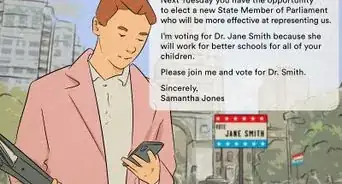 How to Win a Local Election
How to Win a Local Election
References
- ↑ https://www.house.gov/the-house-explained
- ↑ https://www.whitehouse.gov/about-the-white-house/our-government/the-legislative-branch/
- ↑ https://www.npr.org/2019/11/04/767959274/why-these-5-states-hold-odd-year-elections-bucking-the-trend
- ↑ https://www.usa.gov/who-can-vote
- ↑ https://www.vote.pa.gov/Voting-in-PA/pages/voting-at-a-polling-place.aspx
- ↑ https://www.usa.gov/absentee-voting
- ↑ https://www.ncsl.org/research/elections-and-campaigns/vopp-table-18-states-with-all-mail-elections.aspx
- ↑ https://www.ncsl.org/research/elections-and-campaigns/early-voting-in-state-elections.aspx
About This Article

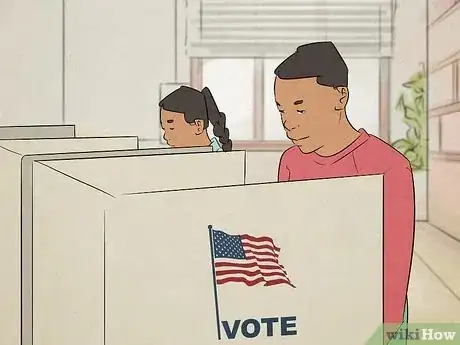
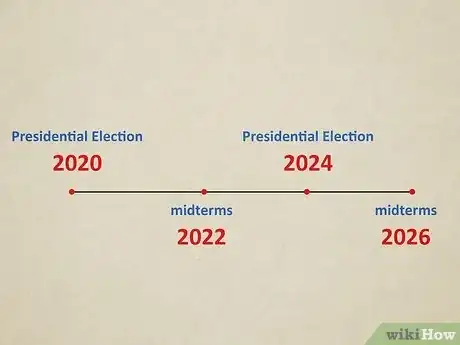

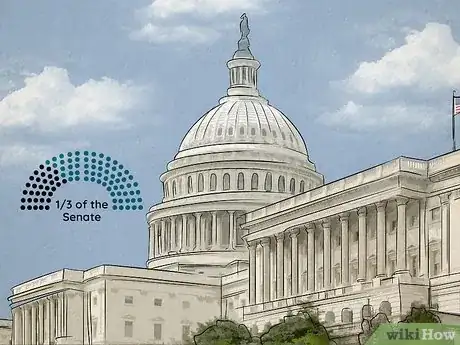
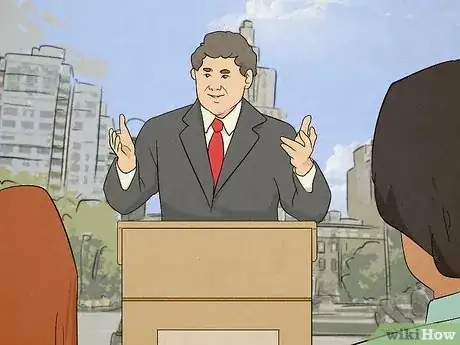


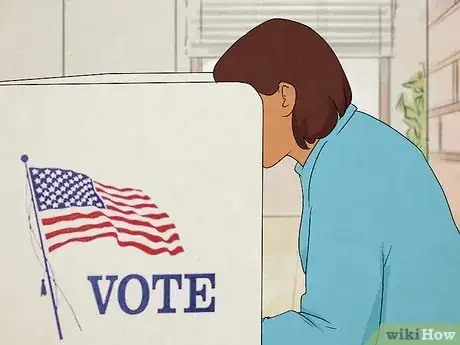
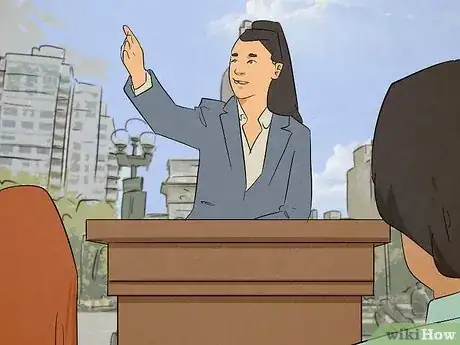
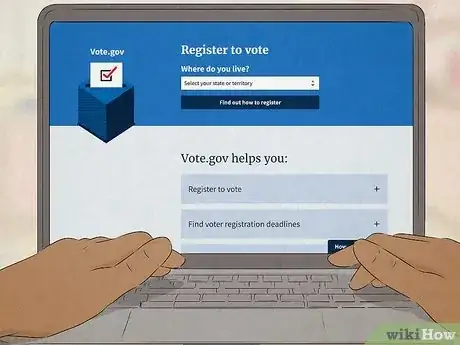

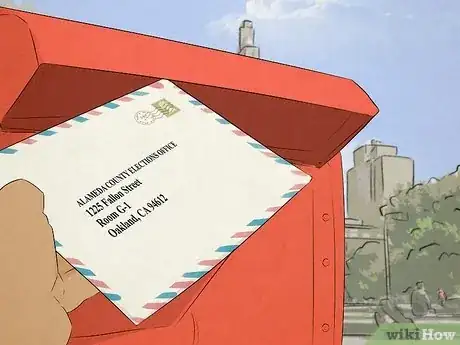









-Step-1.webp)



































